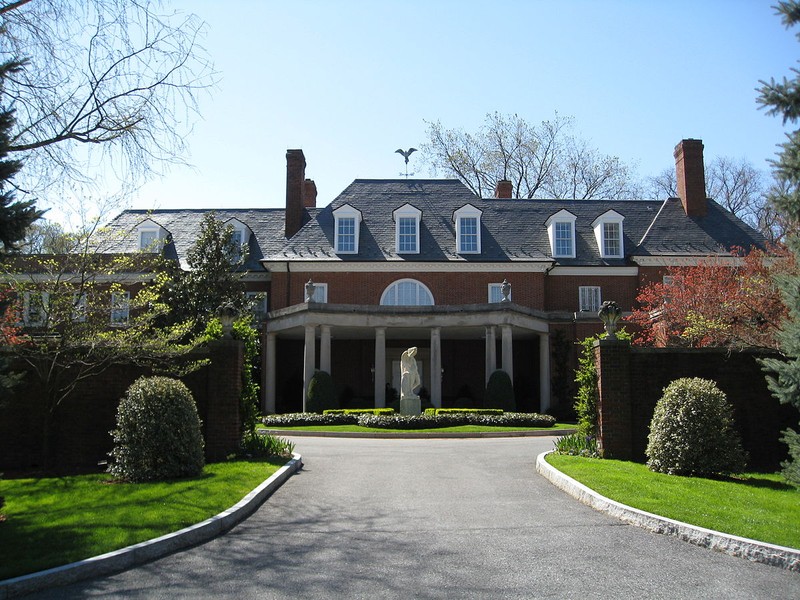Hillwood Estate, Museum, and Gardens
Introduction
Text-to-speech Audio
Images
The Hillwood Mansion was built in the 1920s but designed in ithe Georgian architecture style of early America. Post renovated the mansion to be her museum in the 1950s. Wikimedia Commons.

Hillwood's founder, Marjorie Merriweather Post, lived a busy life of socializing and art collecting. She lived out her days at the mansion and envisioned it be opened to the public after her death. Wikimedia Commons.

Backstory and Context
Text-to-speech Audio
The Hillwood estate was originally a mansion that was built in Georgian-style architecture, and was bought by Marjorie Post in 1955. Marjorie herself was born to Ella and Charles Post, the founders of the Post cereal company, and inherited a business and entrepreneurial work ethic from her parents, which led her to become a vastly successful businesswoman. At the age of 27, Marjorie inherited the company and soon after was married and formed a family. It was during this time that Marjorie began to develop a taste for late 18th-century French art, which was popular among the upper class in New York at the time, through the influence of art dealer Sir Joseph Duveen. Several marriages later, Marjorie visited the Soviet Union as an ambassador, where she discovered imperial Russia’s decorative arts, which she added to her ever-growing artistic tastes.
After divorcing her third husband, Marjorie bought Hillwood
in 1955 in order to serve a dual purpose: to be a fashionable home with plenty
of staff, and to also be a location where she could display her sizeable
artistic collections. Hillwood soon became the site of innumerable parties
among the upper class in Washington, DC, as well as garden tea gatherings and
formal dinners. In addition, Hillwood was also made host to Vietnam veterans in
the 1960s and 1970s, where they could attend tea gatherings with live
entertainment. After Marjorie Post’s passing, Hillwood was formed into a
permanent museum, which strives to bring Marjorie’s passion for excellence,
hospitality, and fine art to those who visit the estate.
Sources
"Mission and Vision." Hillwood Estate, Museum, and Gardens. Accessed November 2017. http://www.hillwoodmuseum.org/how-we-are-run/mission-and-vision
